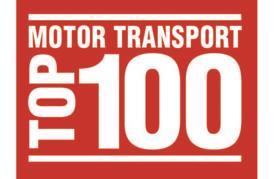Pallet networks have so far failed to heed a call by Palletline to join it in reducing maximum pallet weights on tail-lift deliveries – though a number of them say they are considering the issue.
Palletline said last month that it would be introducing a new pallet weight restriction of 750kg on tail-lift deliveries from October in order to reduce manual handling risks for its drivers.
The move confirmed rumours that had been circulating for several weeks that the network was reducing the maximum tail-lift pallet weight from 1,000kg. The action was accompanied by a call from Palletline MD Graham Leitch for all other pallet networks to consider doing the same.
So far, none of the other major pallet networks has followed Palletline’s lead.
Pall-Ex group MD Kevin Buchanan told MT at the time that a review of his network’s home delivery services was taking place that might ultimately include the issue of pallet weights.
Not necessarily safer
However, he added that lighter pallets in themselves would not necessarily make deliveries safer or easier where steps or uneven surfaces such as gravel were involved.
Buchanan has not been the only one to question the health and safety benefits of the move. Palletways operations director Mike Harrison confirmed his network was involved in industry-wide discussions on the issue and would continue to monitor the matter.

But he stressed that Palletways believes health and safety issues “do not simply surround the weight of pallets but need to take into account a number of other important factors such as the shape and dimensions of the freight and delivery type”.
Canvassing members
Some of the other networks have been more positive. A spokeswoman at UPN, for instance, said it is currently canvassing its members to see what they wish to do. “It is something we’d like to keep abreast of. We are considering it but we have to canvass our members before we make any decisions,” she added.
Nigel Parkes, MD of Pallet-Track, endorsed the principle but questioned how practical any enforcement would be. “I’m 100% behind the concept but I’d ask how this will be policed,” he said.
“Hubs don’t have the ability to weigh every piece of freight, and is a haulier-member in a rural location really going to give up 10% of their work [to meet the delivery limit]?”
The other major networks have so far refused to say much on the matter.
A spokeswoman for Fortec said the issue had been “the subject of debate within the industry for some time” but declined to comment further.
Mark Duggan, MD of The Pallet Network, would only say it had “worked closely” with the Association of Pallet Networks (APN) on the issue and also declined to say more.
Palletforce has so far not responded to request for comment.
Paul Sanders, chairman of the APN, confirmed his organisation is looking at the issue of tail-lift pallet weights with the RHA and the HSE, and is currently scanning delivery data to find out how many pallets fall into this category of delivery.
“This subject is very much work in progress and is firmly on all pallet networks’ agendas,” he said.
Palletline, which has already confirmed that tail-lift deliveries account for 5.4% of its total deliveries, said it is disappointed that none of the other seven major networks has committed to following its lead and insisted the move had gone down well with customers and network members.

It repeated its call for other networks to join in with the initiative.
Risk being left behind
“Networks risk being left behind as we act decisively – and as yet exclusively – to improve health and safety for drivers,” Leitch said. “Not only has the reaction from our members and customers been incredibly positive, we have since received membership enquiries from hauliers who have actually stated that the tail-lift decision drove them to get in touch.
“With this insight into the desires of hauliers in mind, I would again urge all other networks to take action and introduce the measure sooner, rather than later,” he added.
Leitch’s comments appear to rule out any rethink on the policy, despite the suggestions from the naysayers that simply reducing pallet weights does not adequately address the risk of manual handling injury associated with tail-lift deliveries.
Less competitive?
Other rivals have advanced the idea that the move might be as much about raising rates (by continuing to charge the current pallet rate for loads that are 25% lighter), or even shedding some lower-margin business, as it is about safety.
Palletline has not commented on this, but asked whether the move will render the network less competitive and lose it business in a marketplace known for its rock-bottom rates, a Palletline spokesman said: “The commercial risk is a secondary factor to driver safety, which is the priority.”
Another issue is whether any parties outside the pallet network sector will care one way or the other. As Pall-Ex’s Buchanan suggested, even if the whole pallet network sector followed Palletline’s lead on pallet weights it would still be just “a fraction” of the total transport sector.

Other firms, such as large 3PLs, probably would not follow suit unless legislation forced them to, he added.
That’s also the view of Nigel Parkes at Pallet-Track. “This needs to be driven by legislation,” he told MT. “Clients accept legislation and it would create a level playing field.”
In the absence of any legal obligation, however, it remains to be seen whether anyone will be minded to join Palletline in its move and what effect it might ultimately have on their volumes of business. Then again, every journey starts with a single step.




























